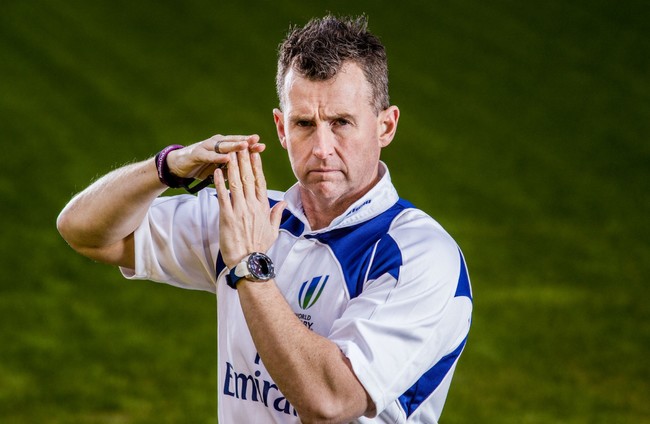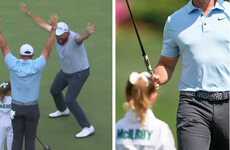NIGEL OWENS HAS sought to provide clarity over new directives concerning high tackles in rugby union and insists there is absolutely no desire to remove big hits from the sport.
Last December, World Rugby confirmed the introduction of measures aimed at limiting both reckless and accidental contact with the head, with illegal tackle categories redefined and sanctions to deter high tackles increased.
Yet Owens — widely regarded as one of his sport’s leading officials and currently involved in Tissot’s #RespectTheRef campaign – believes the changes have been misinterpreted in certain quarters.
“There has been a bit of confusion,” he told Omnisport. “I think people have been thinking that the tackle law has changed, when it hasn’t changed. All there has been really is a focus and an emphasis on us [officials] being stricter in dealing with high tackles or contact to the head that is dangerous and causes serious injury, or illegal contact with the head with force.
“Last year there could have been a decision where a referee would look at [an incident] as an orange, which means if the referee gives a red card, he’s right, and if he gives a yellow card and explains why he’s given a yellow card, he’s also right.
“The majority of referees would tend to give the one below just to make sure, so if it’s an orange card, instead of going up to a red you may come down to a yellow because it’s one of those in-between ones. Basically this is telling us ‘look, maybe last year we could have been looking at this as an in-between, but this year we really need to be strict on this and give a red for it’.
“Where I’m pretty sure we all agree is we need to make sure that such a physical contact sport as rugby is made as safe as it possibly can be. These directives that have come in are not to get rid of the big hits. We want the big tackles where people get up on their feet and cheer when someone gets tackled back a few yards in a legal tackle. We love that in the game, that’s what makes rugby special in one sense.
“What we want to do is to get rid of the reckless, where a player goes in high and maybe doesn’t think about his duty of care to the player he’s tackling… get away from those illegal, reckless and dangerous hits that make contact with the head.”
Owens was the referee for a European Champions Cup match between Saracens and Toulon last month in which France international Mathieu Bastareaud flattened Alex Lozowski with a perfectly timed — and 100% legal — tackle.
“Both players got up afterwards, the crowd were on their feet and even the players on the field could feel it, even I as a referee was thinking ‘oof, what a hit’,” Owens added.
“We don’t want to lose that from the game but we want those hits to be legal, to be as safe as big hits like that could possibly be. The awareness [regarding head injuries] has certainly heightened in the last few years and quite rightly so. Player safety comes first every time, of course it does.”












That Boris Johnson clip is gold no matter how many times you see it. Milled the bloke out of it, gets up, quick look at the player on his knees and Boris jogs off…classic.
Boris Close line more like
Pity Mourinho didn’t get a kick and need treatment from s doctor. Borris milled a little kid out of it too going for a ball at some school thing. Think the kid was 5.
Boris for Taoiseach.
Borris v Trump for US President would be some spectacle
https://youtu.be/JpfZShzIwd8